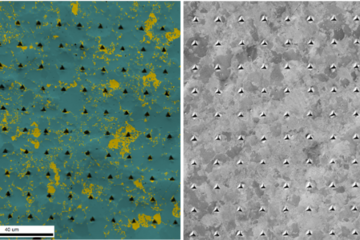All genres
541.
Talk
Modelling structural materials in realistic environments by ab initio thermodynamics. EUROMAT 2017, Thessaloniki, Greece (2017)
542.
Talk
Lattice dynamics in high entropy alloys: understanding the role of fluctuations. EUROMAT 2017, Thessaloniki, Greece (2017)
543.
Talk
Impact of magnetic fluctuations on phonons: a Green's function-based approach. MPIE-ICAMS workshop, Ebernburg, Germany (2017)
544.
Talk
Efficient approach to compute melting properties fully from ab initio with application to Cu. MPIE-ICAMS workshop, Ebernburg, Germany (2017)
545.
Talk
Ab-initio investigation of the role of kappa carbide in upgrading Fe–Mn–Al–C alloy to the class of advanced high-strength steels. ArcelorMittal Global R&D Gent, Thessaloniki, Greece (2017)
546.
Talk
1 Billion Tons of Nanostructure - Metastability Alloy Design and Segregation Engineering. 38th Risø Intern. Symp. Materials Science Advanced Metallic Materials by Microstructural Design , Roskilde, Denmark (2017)
547.
Talk
Fundamental compositional limitations in the thin film growth of metastable alloys. Rapidly Quenched & Metastable Materials 16, Leoben, Austria (2017)
548.
Talk
Metastability Alloy Design. 16th Intern. Conference on Rapidly Quenched and Metastable Materials (RQ16), Leoben, Austria (2017)
549.
Talk
Finite temperature excitation mechanisms and their coupling in magnetic shape memory alloys. The Materials Research Centre (MRC), Indian Institute of Science (IISc), Bangalore, India (2017)
550.
Talk
Multiprobe and Multiscale Characterisation of complex Materials. Fraunhofer Conference ‘The Future of Materials – Materials Future‘, Halle, Germany (2017)
551.
Talk
Reconstructing field ion microscopy and atom probe data. Australian Atom Probe Workshop, Magnetic Island, Australia (2017)
552.
Talk
A molecular dynamics study of the Mg(0001)/H2O interface using empirical potentials. IMPRS-SURMAT Annual Retreat 2017, Meschede, Germany (2017)
553.
Talk
From Semiconductors to High-Strength Steels and Back Again. 10 years of the Laboratory for Photovoltaics & Semiconductor Physics, Luxembourg, Luxembourg (2017)
554.
Talk
Ab initio determination of phonon lifetimes up to the melting point. EMRS Spring 2017, Strasbourg, France (2017)
555.
Talk
How to achieve interoperability - a modeler’s perspective. 1st EMMC International Workshop, Wien, Austria (2017)
556.
Talk
A Brief History of Metals. Public Named Max Planck Lecture, MPIE Düsseldorf, Düsseldorf, Germany (2017)
557.
Talk
Impact of doping on the magnetic and structural transformations in magnetocaloric materials. DPG Spring Meeting of the Condensed Matter Section, Dresden, Germany (2017)
558.
Talk
Ab initio modelling of phase diagrams in magnetic Heusler alloys: achievements and future challenges. SUSTech Global Scientists Forum, Shenzhen, China (2017)
559.
Talk
Ab initio guided design of structural materials with superior mechanical properties. APS Meeting 2017, New Orleans, LA, USA (2017)
560.
Talk
Ab-initio study of the interplay of hydrogen and microstructure in Ni-based superalloys. DPG 2017, Dresden, Germany (2017)











